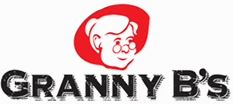One of the most beautiful additions to many projects is the application of a transferred image.
Some of these images may be something you have seen on the web, Pinterest, Instagram, a family photo, or even something out of a magazine.
There are dozens of ways to add transfers to painted furniture, ranging from traditional methods, involving, transfer gels, Mod Podge, Granny B's Armour, tracing, acetone, wax paper, carbon paper...you name it!
If you're wanting to learn more about DIY transfer methods, check out this site:
https://thegraphicsfairy.com/12-easy-image-transfer-techniques/
One of the most exciting developments has occurred in that space where creativity and technology collide!
Waterslide Transfers or decals have been around for a very long time, I still remember building my first model plane and going through the same process as today's 'decor' waterslide transfers. As home printers have become more and more affordable, many households now have access to their own laser printers and quite often colour units.
It has become possible to print virtually any image onto specialized, yet relatively inexpensive decal paper in your own home, or to visit your nearest copy shop and have them photocopy a colour image onto your paper.
A pack of 10 DIY Laser Printer Waterslide blank A4 sheets will cost you from about R25 a sheet to R35 a sheet depending on the quality you prefer. If you add the cost of printing it is quite feasible to produce your own waterslide decals on your laser printer for around R30 to R40. When you compare this cost to the locally produced transfers (ranging in price from about R65 to R180)...the saving is considerable and you get to create your own designs without infringing on copyright (since you would be using it for personal use and not capital gain).
Shop for your waterslide blanks at:

In terms of pre-printed locally produced offerings, as already mentioned these will start at around R65 and go up to R180. They do have the advantage of coming in A3 sizes in certain instances. However aside from the higher price, waterslide technology as a general statement is not the easiest application, and quite often you will see classes which come with a charge where you need to be taught to apply the product, obviously practice makes perfect and after a few tries (or x number of 'flops' x R65) - you may get their on your own and master it at some expense.
In my personal opinion the present pre-made offering are not vastly different or better than what can be achieved in your home using DIY blank paper or even some of the traditional transfer methods, it's also a lot cheaper, does not not infringe on copyright laws.
How do you get the images onto the DIY waterslide paper?
Image sources are all around us, photos, the web, Facebook etc. There are some legal and privacy limitations to what you can use and how you use it, but generally, if it's for your own use and not for resale, you can in most cases apply that image...then again I am sure the Transfer Police Won't be searching your home for downloaded images.
The GREAT NEWS is..number of FREE image resources for transfers is staggering, just take a look at the beautiful images available for your download at
The Graphics Fairy:
Once you have your image, you just arrange them on a programme like Power Point or even MS Paint (which comes Free with Windows), and hit 'Print'

Transferring the decal to your item is where the work comes in.
1) Trim your image as close to the outline as you can
2) Take your image and soak briefly let the paper curl and then settle
3) Test the edge of the transfer to see if the image is shifting
4) Quickly apply a coat of water onto the surface you are wanting to transfer to with your brush to help you move the transfer around
5) Remove your transfer - be careful not to leave it too long...as once the image separates from the paper...it's almost impossible to get it back on and it usually shrivels-up
6) Now position the edge of your transfer at the position you want it to rest and gently slide the transfer from that edge, slowly removing the backing sheet positioning as you go, and before it gets too dry
7) Gently blot out any creases with some tissue paper and ensure a smooth resting position
8) Allow an hour or so to dry and let all of the water evaporate before sealing the surface with Granny B's Classic Seal or Armour
NB: It is often easier to work the transfer into position if you are applying to a sealed surface. I have personally done it on a painted surface before sealing, and it makes it slightly more tricky, but still doable with practice.
Whichever process your prefer, and whichever way you do it...transfers are fun, easy to do (with practice) and shouldn't cost you an arm or a leg!
Using waterslide DIY paper, I made a few decorative doorknobs at a total cost of R8 including the knob and the paint!

As a Consumer Champion we want to make certain that our customers are never exploited, have access to the latest, and most enjoyable techniques without infringing on any artists original work. DIY image transfers are intended for your personal enjoyment and the knowledge shared here is not intended to be used for commercial purposes.
If you are after something really unique, easy to use, of a high quality, that will make your furniture project, mirror, window, glass, really stand-out from the crowd...and on a large scale...watch out for our upcoming launch of designer quality furniture transfers from Prima...


1 comment
Good day to you
I’m looking for some of your water slide decal paper please, they econo range for laser,
Please if you could help, would be greatly appreciated
Thanks
Gary Downs
0824901725